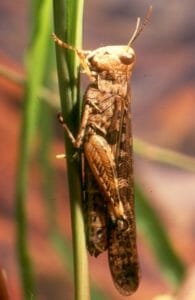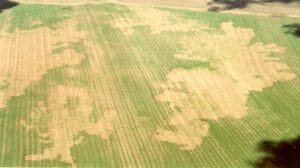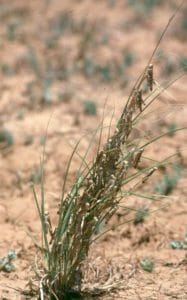By Douglas Lawton, PhD Candidate in ASU School of Life Sciences, December 14, 2020
After a record-breaking drought for the past two years, Australia is experiencing a resurgence in Australian Plague Locust (Chortoicetes terminifera) outbreaks throughout the eastern seaboard, but more intensely in New South Wales. The Australian Plague Locust Commission (APLC) predicts that swarms and outbreaks will likely continue into December with a moderate likelihood of region-wide outbreaks developing later into summer.
A shift in large-scale climatic patterning helped Australia out of the 2018/2019 drought but also promoted locust outbreaks. Specifically, the Indian Ocean Dipole (IOD), El Niño–Southern Oscillation (ENSO), and Southern Annular Mode (SAM) are the main climatic patterns that drive precipitation and temperatures throughout Australia. Currently, the IOD is neutral (no influence), ENSO is in the La Niña stage (increased precipitation for Australia) until January 2021, and SAM is in the Summer Positive stage (enhances La Niña precipitation for Australia). Predictions for these climatic patterns can be seen on the Australian government’s Bureau of Meteorology website.
These large-scale patterns are important for grass growth throughout Australia’s arid interior. With the increase of rain and vegetation at the start of the locust season, locusts are able to develop into adults, migrate, and breed in significant numbers. Follow up rain events, which are more likely due to the large-scale climatic patterns, will allow locust numbers to increase considerably. If precipitation is abnormally high throughout the rest of the summer, we will likely see more successful locust breeding and swarm formation.
Stay up to date on the situation by following the APLC monthly bulletins.
Photos courtesy of Chris Adriaansen at The Australian Plague Locust Commission


